
(Photo: Isagani Serrano)
In Arakan Valley, the upland “rice belt” of North Cotabato, Philippines, farmers hold dear a rice variety—Dinorado, a native upland rice characterized by its pinkish grain, sweet aroma, and good eating quality. For the Arakeños, Dinorado has been part of their community as far as they can remember. Long ago, the Arakan Valley was home to exotic Dinorado rice. So much so that Dinorado has become part of their pride and social identity.
Dinorado is a “special” rice that is sought for weddings, birthdays, and fiestas, among other occasions, and it is a status symbol in the country. Its price is 50% higher than ordinary rice. Unfortunately, the quality of Arakan Dinorado diminished as the genetic purity of its seed stocks declined.
To preserve the purity of the seeds, farmers must know how to manage the health of their seeds—and this lack in management was found in the farm communities in an initial needs assessment of the Consortium for Unfavorable Rice Environments (CURE) of the International Rice Research Institute (IRRI).
Also, most of these farmers lack access to higher-yielding modern varieties. Traditional varieties tend to have a lower yield (an average of 1.6 tons per hectare). Thus, 4–6 months of hunger is a common experience among farmers who cultivate traditional varieties. During these months of hunger, farmers and their family sometimes eat the seeds set aside for the next cropping season.
Another problem is that upland rice farming, which is mostly rainfed, is at the mercy of the weather. “For this same reason, seed producers do not usually lend seeds to upland farmers; even local moneylenders are less likely to invest in farming that is deemed high risk,” related Dr. Rosa Fe Hondrade, a social scientist at the University of Southern Mindanao (USM).
These are some of the challenges that CURE aimed to tackle in Arakan. In a team effort, the CURE scientists at IRRI joined forces with USM, the Philippine Rice Research Institute, the Municipal Agricultural Office of Arakan, and the Department of Agriculture. They call themselves the “Arakan Valley team.”
Seeds of survival
The Arakan Valley team understands the value of seeds to farmers. Farmers depend on viable seeds for the survival of their households; when seeds are scarce, so is food security. To avoid this problem, the team set its sights on improving seed health and quality management practices of the farmers and making modern varieties along with other traditional varieties available to them.
So, they mobilized a group of farmers who were willing to be trained on how to properly produce good-quality seeds and to know about modern rice varieties suitable in their area. This group of farmers evolved into a local network called the “community seed bank.”
Benefits to the farmers
Through the community seed bank, “We learned how to produce quality seeds such as getting rid of unwanted types of rice from our fields, as well as selecting, drying, and storing seeds, and other seed health practices,” said Nestor Nombreda, a 54-year-old farmer and president of the Arakan Community Seed Bank Organization (ACSBO).
“In 2006, ACSBO came into the picture because farmers wanted their community seed bank to continue even after the project ended,” explained Dr. Rosa Fe Hondrade.
“An important benefit of being a member of the community seed bank is that, if my crop fails, I can borrow seeds from another farmer,” said Hernani Dumalag, 59 years old. “If I need a variety of seed, I can barter even a small amount of rice, let us say, 5 kilos. Besides, buying seeds from a seed producer is expensive.”
Aside from the benefit of readily accessible seeds, farmers know the source and the quality of the seeds. Thus, the community seed bank provides an informal guarantee of quality.
On-farm conservation
“The community seed bank in Arakan achieved a momentum that allows farmers access to the seeds they need while maintaining biodiversity,” said Casiana Vera Cruz, senior scientist at IRRI and CURE workgroup leader for upland farming areas.
Arakan’s community seed bank is categorized as in situ conservation (or on-farm conservation). In contrast to off-farm conservation (gene banks), in situ conservation allows “farmers to be stewards of crop diversity— they grow varieties as a way of conserving them and preserving plant genetic diversity,” Dr. Vera Cruz explained. “By increasing the diversity of varieties that farmers grow and preserve through active use of traditional varieties, particularly those with useful traits such as good grain quality, adaptability, resistance to many biotic stresses, and tolerance of abiotic stresses, farmers can increase yield and reduce disease and pest problems.”
Plant genetic diversity is perhaps more important to farmers than any other environmental factor. It provides them and breeders with options to develop, through selection and breeding, new and more productive crops that are resistant to pests and diseases and are well adapted to changing environments.
More productive crops
Genetic diversity made it possible for plant breeders to develop new high-yielding modern rice varieties, which the Arakan Valley team introduced to farmers. These varieties were shown on demonstration during farmers’ field days for farmers to judge how modern varieties perform when it comes to yield, grain quality, and resistance to pests and diseases, among other factors important to farmers.
“Farmers can then make an informed decision on what to sow on their respective farms,” said Dr. Edwin Hondrade, CURE key site coordinator of USM.
With ACSBO knitting the Arakan farm community closer together, it becomes easier for farmers to share their experiences on the type of varieties they grow, their farming practices, and their seed health management practices.
In short, the community seed bank was widely accepted in several villages of Arakan, and the local government unit even recognized and supported it.
Amidst progress
So much has changed in Arakan since the 1990s. “Going to the upland areas of Arakan from Kidapawan, its nearest city, used to take almost a half-day,” noted Dr. Vera Cruz. “But now, it takes just over an hour. Gone are the rocks that speckled the unpaved roads, which made them rougher and more slippery during the wet season.”
Now, a long stretch of cement roads connects farms to markets. North Cotabato has been transformed from the fifth-poorest province in the Philippines in 1998 into one of the progressive provinces and a favorite investment area in the region.
This influx of investments transformed some of the upland rice areas in Arakan into plantation crops, particularly the revival of old and new rubber plantations. Rubber trees did make some Arakan farmers financially well-off. This economic progress became evident with some changes in the Valley: some nipa huts became houses of stones; the usual sight of horses tied to a tree became pickup trucks and utility vehicles; plus, some signs of development here and there—a gasoline station, a grocery store, and a hospital.
__________________
Ms. Lanie Reyes is the managing editor of Rice Today.

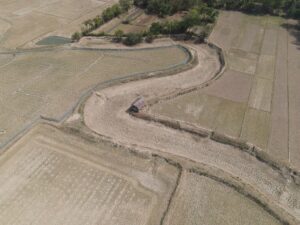




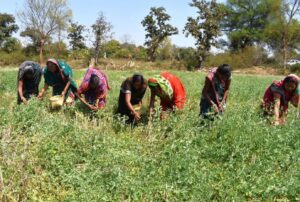
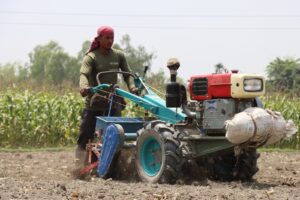
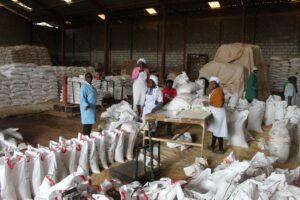
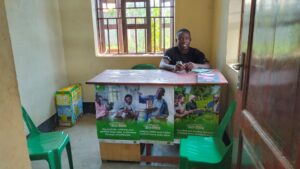
Where can I buy non gmo dimorado seeds fornplanting?
Please contact the Philippine Rice Research Institute or the PhilRice office nearest your location. The contact details can be found here: https://www.philrice.gov.ph/contact-us/
Thank you.
Hi dear i want rice seed in Pakistan